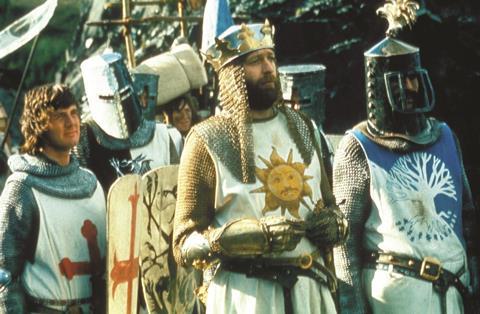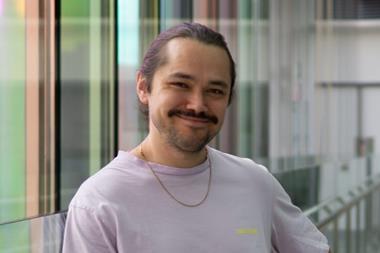Phrases and characters that give us a neat shorthand for sharing ideas
It’s no secret the Chemistry World staff love a geeky reference. During my first week, I remember quoting Monty Python and the holy grail in passing, only to be answered – by three different editors – with the next line from the movie. ‘Tis a silly place.
Pop culture references matter in science, almost as much as spectra, structural formulae or mapping your twisted spaghetti of sensor wires. They are little nuggets that can foster team spirit, encourage a sense of camaraderie, and help break down barriers. Once, a US chemist told me of a group visit to the USSR in the 1960s to witness an experiment. While both teams got on with the science, neither was totally at ease until the US researchers found the entire Soviet group jiving away to Johnny Rivers’ Secret agent man. Everyone joined in and any tensions vanished.
But these shared phrases and earworms take a step even further when trying explain our work. Superheroes, fantastic beasts (and where to find them) and villains like Walter White provide a neat, instantly accessible shorthand to explain concepts that can seem convoluted, bordering on ridiculous. Say ‘handheld spectrometer’ and eyes glaze; say ‘like a tricorder from Star trek’ and people get it.
This even extends to education. A recent paper in the Journal of Chemical Education by Sibrinia Collins and LaVetta Appleby from Lawrence Technological University, US, discussed what happened when students were asked to place the fictional element vibranium (as seen in Marvel’s cinematic universe, most notably in Black panther) on the periodic table.1 This wasn’t a pointless thought experiment: the students looked at its fictional properties and tried to assign it a group, electron configuration and even predict its oxidation state. The exercise made mapping electron shells and sub-shells a puzzle to solve rather than a chore, and bridged how theoretical chemistry can inform discovery.
Of course, not everyone is going to understand – age, background and interests vary – and just quoting sitcoms all day will get old very quickly. But, like named reactions (see pXX) we dismiss pop culture at our peril; it sits on the common ground where science belongs and, even if nobody else notices, at the very least it’s brightened up your day.
It’s no secret the Chemistry World staff love a geeky reference. During my first week, I remember quoting Monty Python and the holy grail in passing, only to be answered – by three different editors – with the next line from the movie. ‘Tis a silly place.

Pop culture references matter in science, almost as much as spectra, structural formulae or mapping your twisted spaghetti of sensor wires. They are little nuggets that can foster team spirit, encourage a sense of camaraderie, and help break down barriers. Once, a US chemist told me of a group visit to the USSR in the 1960s to witness an experiment. While both teams got on with the science, neither was totally at ease until the US researchers found the entire Soviet group jiving away to Johnny Rivers’ Secret agent man. Everyone joined in and any tensions vanished.
But these shared phrases and earworms take a step even further when trying explain our work. Superheroes, fantastic beasts (and where to find them) and villains like Walter White provide a neat, instantly accessible shorthand to explain concepts that can seem convoluted, bordering on ridiculous. Say ‘handheld spectrometer’ and eyes glaze; say ‘like a tricorder from Star trek’ and people get it.
This even extends to education. A recent paper in the Journal of Chemical Education by Sibrina Collins and LaVetta Appleby from Lawrence Technological University, US, discussed what happened when students were asked to place the fictional element vibranium (as seen in Marvel’s cinematic universe, most notably in Black Panther) on the periodic table.1 This wasn’t a pointless thought experiment: the students looked at its fictional properties and tried to assign it a group, electron configuration and even predict its oxidation state. The exercise made mapping electron shells and sub-shells a puzzle to solve rather than a chore, and bridged how theoretical chemistry can inform discovery.
Of course, not everyone is going to understand – age, background and interests vary – and just quoting sitcoms all day will get old very quickly. But, like named reactions, we dismiss pop culture at our peril; it sits on the common ground where science belongs and, even if nobody else notices, at the very least it’s brightened up your day.
References
1 S N Collins, L Appleby, J. Chem. Educ., 2018, DOI:10.1021/acs.jchemed.8b00206












No comments yet